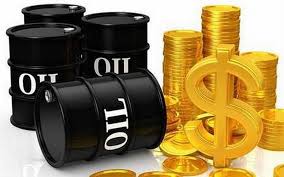Oil prices experienced a slight decline on Monday as investors continued to express concerns regarding the pace of economic expansion in China. The looming possibility of additional interest rate hikes in the United States that might impact fuel demand also weighed on market sentiment.
The international benchmark, Brent crude, saw a marginal drop of 8 cents, equivalent to 0.1%, settling at $84.40 per barrel by 0330 GMT. Simultaneously, U.S. West Texas Intermediate (WTI) crude stood at $79.78 per barrel, marking a 5-cent decrease, or 0.1%. These reductions followed a second week of losses for both Brent and WTI after Jerome Powell, the Chair of the U.S. Federal Reserve, hinted at the necessity of further interest rate increases to address persistent inflation concerns.
The trajectory of oil prices exhibited some volatility in early Asian trading before relinquishing early gains. China’s decision to halve the stamp duty on stock trading, a measure aimed at revitalizing struggling markets, briefly nudged oil prices upwards. However, these gains were short-lived.
Tony Sycamore, a market analyst at IG, indicated, “Unfortunately, after last week’s modest (Chinese central bank interest) rate cut, the announcements above amount to another piecemeal measure that won’t alter investor gloom towards China.” Sycamore’s assessment underscored the sentiment that the incremental measures taken by Chinese authorities might not be sufficient to reverse prevailing concerns about the country’s economic outlook.
China’s manufacturing Purchasing Managers’ Index (PMI), anticipated later this week, is poised to provide additional insight into the global economic landscape. As the world’s second-largest economy, China’s economic indicators often reverberate worldwide. Sycamore anticipated that the PMI could reveal persistently somber economic news, potentially extending the contraction trend for the fifth consecutive month.
In the face of uncertainties in the global economy, particularly concerning China’s economic performance and potential U.S. interest rate policies, the oil market remains in a state of watchful vigilance. The coming days are likely to shed further light on how these factors might influence oil prices in the immediate future.














